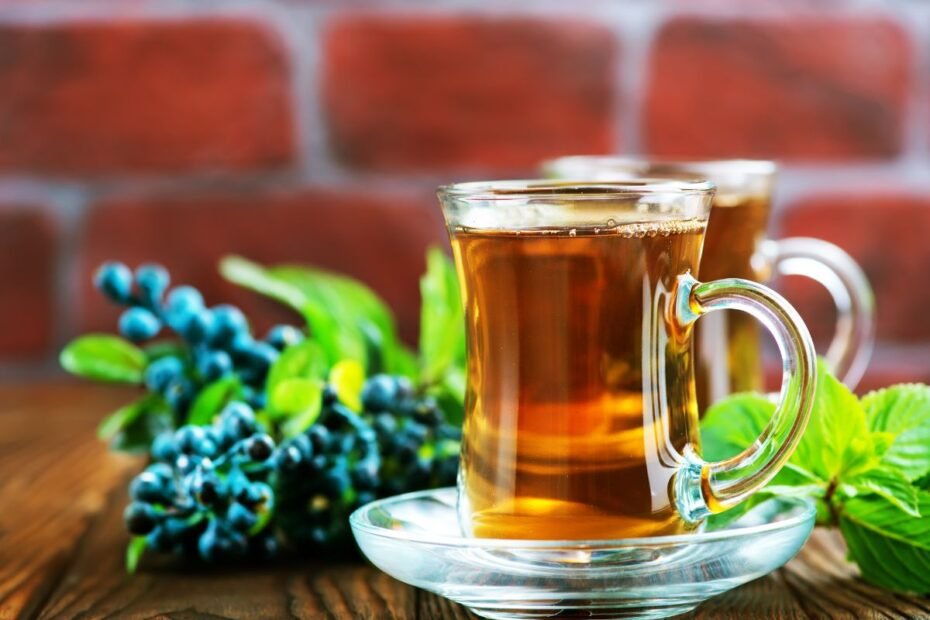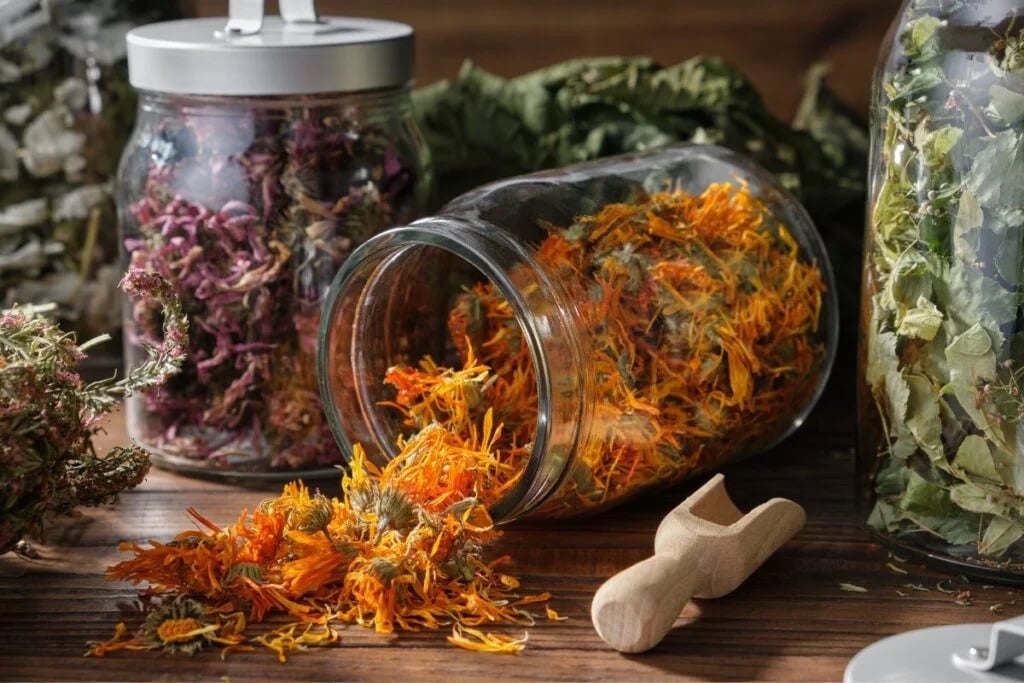Blueberry tea from leaves or berries is one of the most popular teas in the world. And you know why? The antioxidants are several times more abundant in the leaves than in the berries or other parts of the bush. If you want to enjoy the benefits of this tea, it is worth stocking up on dried leaves or berries.
You may have heard that nutritionists often refer to blueberries as a “superfood.” Blueberries have been popular and sought-after due to their antioxidants. These substances fight free radicals in recent decades. The European blueberry (Vaccinium myrtillus, not an American one) is a plant that originated in the Northern Hemisphere. It means, that you can find this plant growing in many parts of the world. If you are lucky enough to grow blueberries in your garden (or know where to find them), you can harvest the leaves and raw berries and use them to make tea for warming and your health in the winter.
How to Pick and Dry Blueberry Leaves for Tea?
Picking blueberry leaves starts with care: do not harvest blotchy, yellow, or not-in-the-best-condition leaves. You will notice that a healthy plant will have red or purple hues. Pick the leaves from young plants from April until the end of October. When the leaves are ready to dry, spread them thinly on a flat surface (such as a baking tray). The thinner you spread the leaves, the quicker they dry and thus retain their delicate flavor. Ideally, dry the leaves in a dark and cooled environment. After a week or more, the blueberry leaves will be sufficiently dry, and you can make your first cup of tea!
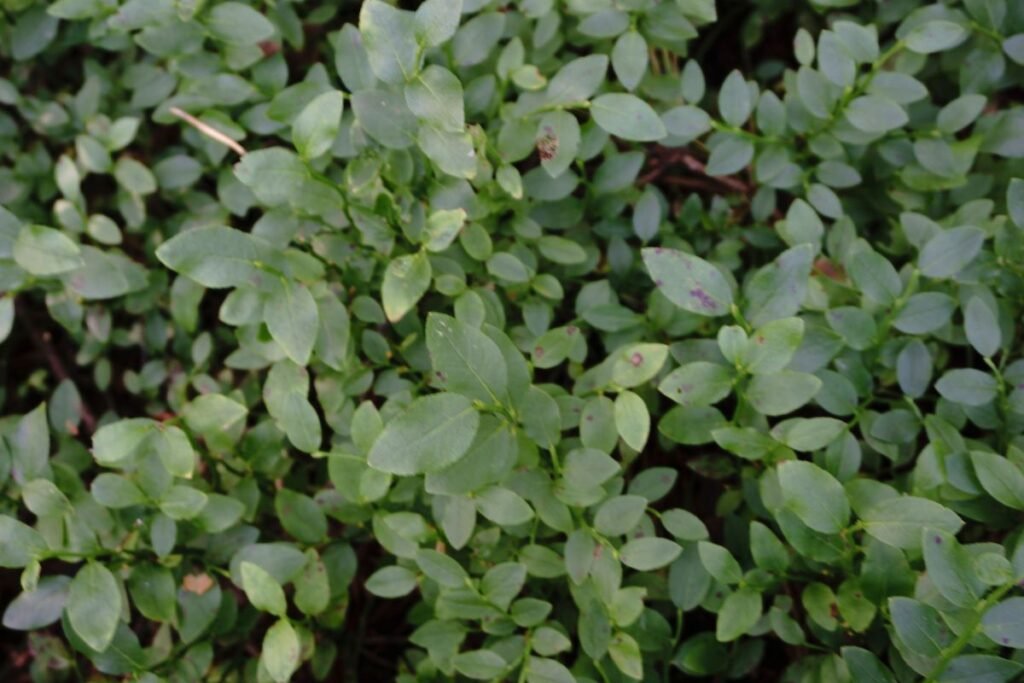
What Are the Benefits of Blueberry Tea?
It is hard to believe how many health benefits a seemingly unremarkable plant can bring to our health. It turns out that blueberry tea can be a choice for anyone suffering from symptoms of cataracts, weak immunity, dementia, Alzheimer’s disease, kidney infections, high cholesterol, hypertension, osteoporosis, poor metabolism, nutrient deficiencies, and anemia.
May Improve Heart Function
Blueberry tea may improve cardiovascular function. Firstly, the high potassium content may act as a vasodilator. It reduces blood pressure and the risk of atherosclerosis, stroke, and heart attack. Second, the high concentration of proanthocyanins in blueberry tea reduces the risk of heart disease.
May Enhance Brain Function
The antioxidants in blueberry leaf and berry tea protect the brain from oxidative stress and plaque buildup. These substances slow down the progression of Alzheimer’s, dementia, and other diseases, and the active compounds in blueberry leaves and berries can help protect against this.
May Improve Digestion
The gallic acid in blueberries is a natural antioxidant that can reduce many types of inflammation, including the stomach. It can optimize digestion, reduce discomfort, cramps, and bloating, and alleviate symptoms of constipation and diarrhea by helping to restore the balance of bacteria in the gut.
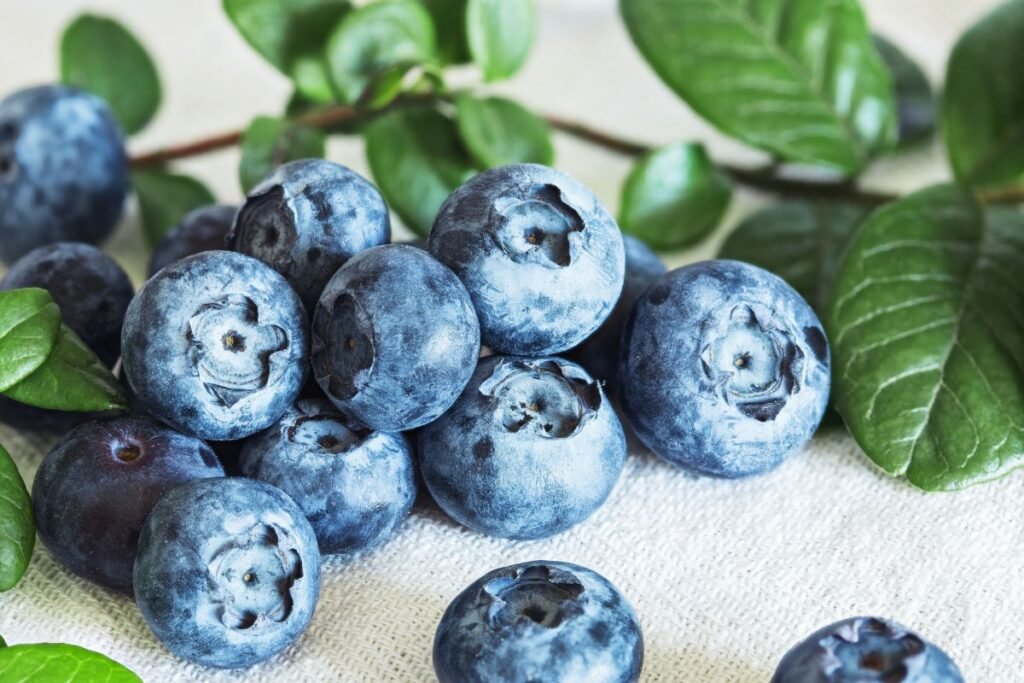
May Strengthen the Immune System
The vitamin C and anthocyanins in blueberry tea can boost our immune system. Vitamin C stimulates the production of white blood cells and acts as an antioxidant. Anthocyanins can seek out free radicals and neutralize them before causing cell mutation or apoptosis.
May Enhance Eyesight
Blueberry leaf tea is rich in vitamin A, which means that this drink can help protect and strengthen eyesight. Vitamin A works as an antioxidant, which prevents macular degeneration in the retina and slows the onset of cataracts.
Blueberry Tea Can Improve Kidney Function
The two acids in this tea (ellagic and hippuric acid) may help to detoxify the bladder wall by increasing the acidity of the urine. In addition, these active components of blueberry tea can reduce the number of oxalates in the body, which can lead to kidney stones.
How to Make Blueberry Tea?
Make blueberry tea from the leaves, the berries, or a combination of both. However, it is also possible to make tea from shoots. Dry the leaves while blueberries are in season. Pick a cup of berries to make tea from them if you prefer. You can refrigerate or dry the berries.

Traditional Blueberry Leaf Tea
Try blueberry leaf tea and experience this unique taste. Traditional blueberry leaf tea usually has a fresh, fruity taste with a slightly sour undertone. But remember, that taste is subjective.
Ingredients:
- 2 cups of water
- two tablespoons of dried blueberry leaves
- one teaspoon of honey or sugar (optional)
Put the water in a saucepan and bring it to a boil. Add the dried leaves to the hot water and boil it while reducing the heat. Once boiling, let the tea steep for 10–15 minutes, then strain. You can add honey to taste or serve it with ice cream if you want a refreshing drink.
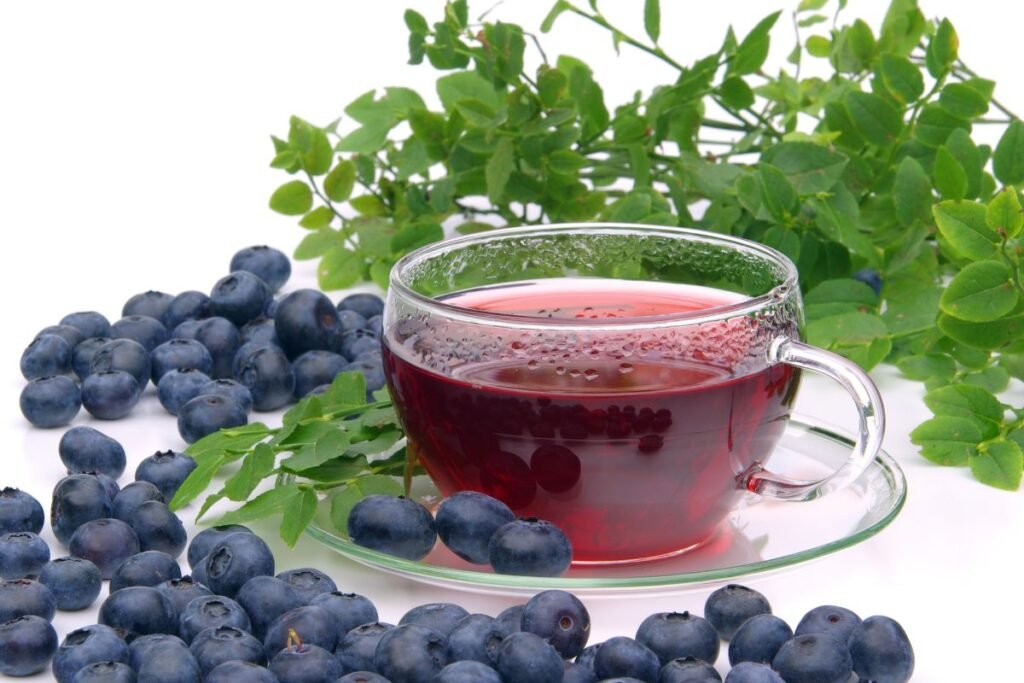
Blueberry Tea from Leaves and Berries
There is a quite simple blueberry tea recipe. Berries and leaves teas are really refreshing and delicious if flavored with cream.
Ingredients:
- 10–12 fresh or frozen blueberries
- 2-3 teaspoons of dried blueberry leaves
- 2 cups of water
- one teaspoon of honey or sugar (optional)
- one tablespoon of cream (optional)
Wash fresh berries thoroughly, then make tea with them, and do not use dried berries. Pour two cups of water into a kettle and let the water boil. Add the berries and soak in the hot water for 10–15 minutes. Finally, add your favorite ingredients: honey, cream, or sugar. That’s it!
Blueberry Tea from Shoots
Blueberry shoot tea usually has a fresh and light taste with a subtle blueberry aroma. Remember that the flavor can vary depending on the quality, the type of shoots, and the other ingredients you use. We recommend to try this recipe and adapt it to your taste!
Ingredients:
- 1-2 tablespoons of dried or fresh blueberry shoots
- 500 ml of boiling water
- agave syrup, honey, or other sweeteners to taste (optional)
Check if the fresh or dried blueberry shoots are clean first, whether you use them. Place the blueberry shoots in a cup or teapot. Pour with boiling water and steep for approximately 5–7 minutes. After the time has elapsed, strain the tea and flavor it with honey or agave syrup to your taste.
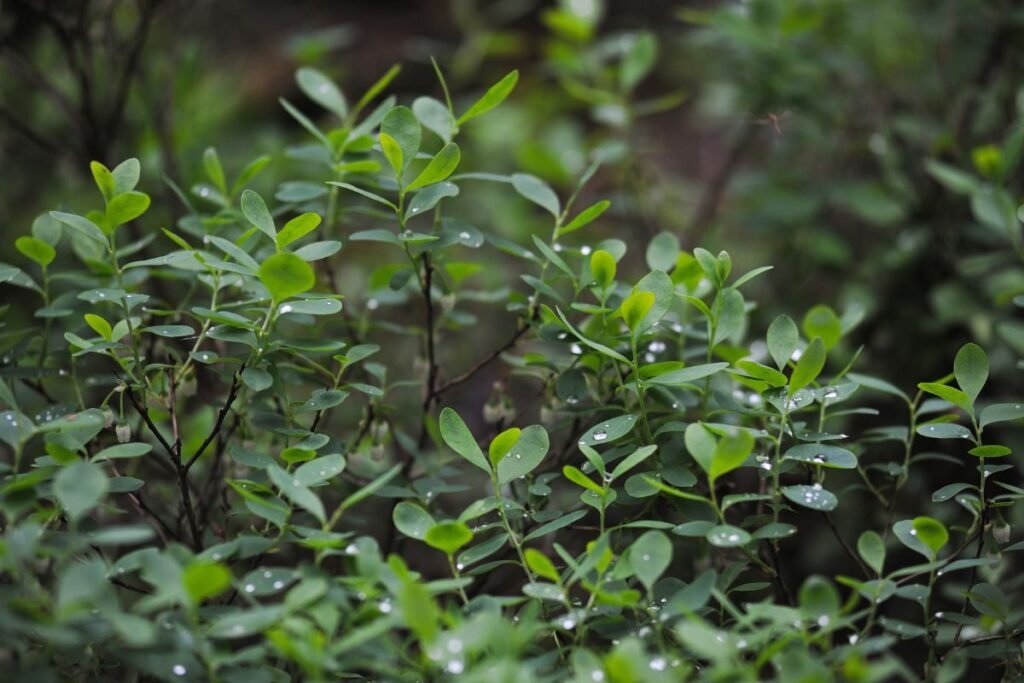
Where Else Can You Use Blueberry Leaves?
Blueberry leaves are versatile, and you can use them practically anywhere. Here are some ideas on how you can use blueberry leaves:
- Culinary experiments in the kitchen. Add dried blueberry leaves to soup, sauce, or marinades. They add a subtle and slightly sour flavor to your favorite dishes.
- Making desserts. Blueberry leaves are perfect for flavoring desserts: ice creams, cakes, yogurts, or puddings. It can be a new way to add flavor and color to your sweet treats.
- Home beauty treatments. Use blueberry leaves in cosmetic mixtures like face or hair masks. Their antioxidant properties can contribute to improving the condition of the skin or hair.
- Aromatic pillows. Easily create an aromatic pillow by placing dried blueberry leaves in a small cloth bag and tying it up. The scent of blueberries can be calming and relaxing after a long day.
- Decorative details. Blueberry leaves can make unique decorative details. Incorporate them into handicrafts, various home décor solutions, and ornaments.
Blueberry Tea Side Effects
Blueberry tea is generally safe for most people. However, the tea can cause an allergic reaction for those sensitive to blueberries; this can manifest in hives, swelling, and difficulty breathing. Notice that blueberry tea may interact with certain medications. So it is best to consult a healthcare professional before including it in your diet.
Sources:
https://www.backyardgardenlover.com/blueberry-tea-recipe/
https://www.sciencedirect.com/science/article/abs/pii/S0308814613010029
https://pubs.acs.org/doi/abs/10.1021/jf980145d
https://pubs.acs.org/doi/abs/10.1021/jf010653e
https://www.organicfacts.net/health-benefits/herbs-and-spices/blueberry-tea.html
Associative photos from © Canva.
